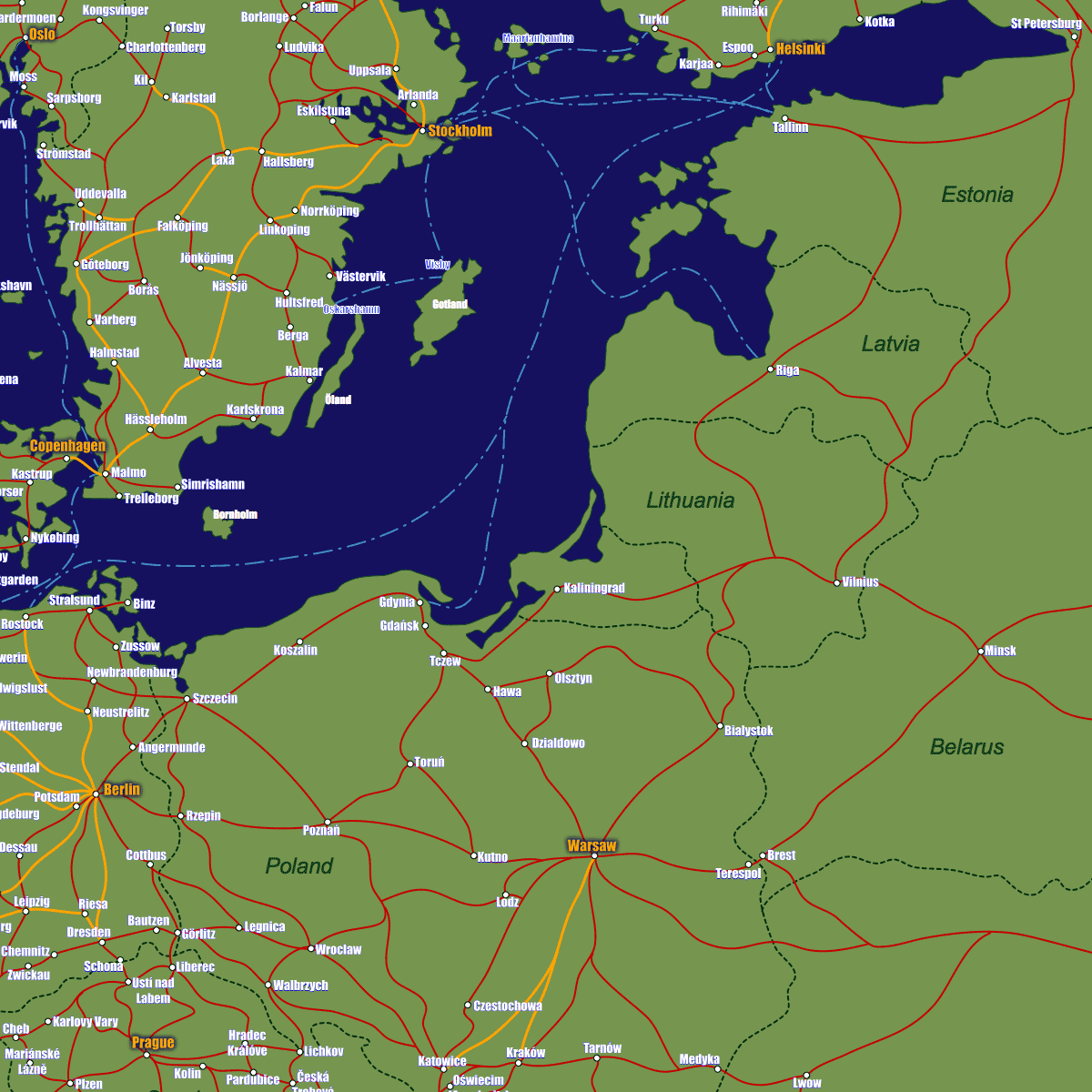

Many of these shortcomings stem from the newness of these routes, the complexity inherent in moving goods across many borders, and the resulting disaggregation of data. Frequency of China-Europe rail services, cargo volume, cargo rates, and other basic information is hard to find, especially compared to maritime and air freight data. The main challenge in squaring all these factors is that despite the attention they receive, there is little reliable and centralized information about these new services. Other developments, including new airports in Asia and improvements to the European Union’s rail network, could impact rail’s competitiveness in the coming years. A chronic trade imbalance between Europe and China means less demand for eastbound services and creates costs for repositioning empty containers. The future of Chinese subsidies is uncertain. The rail services also face constraints to more dramatic growth. Source: Eurostat, European Union, analysis performed by Infrastructure Economics Centre (CEI)įigure 2b: China-Europe Trade by Value (2007-2016)

These trends highlight the competitiveness of maritime shipping for low-value goods and the competitiveness of air shipping for high-value goods.įigure 2a: China-Europe Trade by Weight (2007-2016) Compared to rail, air transport carried twice as much cargo by weight and more than 13 times by value in 2016. 8 As Figure 2 illustrates, maritime shipping remains dominant, carrying 94 percent of trade by weight and 64 percent by value in 2016. In 2016, rail carried just under 1 percent of trade between China and Europe by volume and just over 2 percent by value. These new services have captured imaginations, but it remains to be seen how much trade they can capture. When a train from Yiwu, China, arrived in London, UK, in January 2017, The Telegraph called it “a new chapter in the history of the centuries-old trading route,” 6 and The Guardian said it “heralds the dawn of a new commercial era.” 7 In the past two years, historic firsts have been celebrated for trains arriving in France, Latvia, and Finland, among other countries. Even countries that have been reluctant to endorse the BRI have embraced these new routes. Providing generous subsidies and state media promotion, China has made direct rail services a major feature of its Belt and Road Initiative (BRI), which aims to bind the world with Beijing through $1 trillion of new infrastructure, trade agreements, and coordination across countless policy areas. Source: Xu Zhang, Eurasian Rail Freight in The One Belt One Road Era, Cranfield UniversityĬhina is the primary force behind these routes, and other countries have been eager to participate. 5įigure 1: Shift in Transit Cost and Time (2006-2017) 4 A study commissioned by the International Union of Railways estimates that China-Europe rail services could double their share of trade by volume over the next decade. Rail’s share of cargo by value is already growing, increasing 144 percent during the first half of 2017, as compared to the same period in 2016. 3 Rail services are considerably cheaper than air and faster than sea, as Figure 1 illustrates, and could provide a compelling middle option for more goods in the coming years. 2 Today, they connect roughly 35 Chinese cities with 34 European cities. Just 10 years ago, regular direct freight services from China to Europe did not exist. 1Īgainst this historical backdrop, new railway services between China and Europe have emerged rapidly. Since then, commerce between Asia and Europe has traveled primarily by sea. Mercantilism and competition among Europe’s colonial powers helped pull commerce to the coastlines. A major shift occurred in the late fifteenth century, when the invention of large ocean-going vessels and new navigation methods made maritime trade more competitive. The compass and domesticated camels helped the “silk routes” emerge between 200 and 400 CE, and peaceful interactions between the Han and Hellenic empires allowed overland trade to flourish.

Responding to Egregious Human Rights Abusesįor over two millennia, technology and politics have shaped trade across the Eurasian supercontinent.Building Sustainable and Inclusive Democracy.Family Planning, Maternal and Child Health, and Immunizations.Energy, Climate Change, and Environmental Impacts.Weapons of Mass Destruction Proliferation.Defense Industry, Acquisition, and Innovation.Intelligence, Surveillance, and Privacy.


 0 kommentar(er)
0 kommentar(er)
